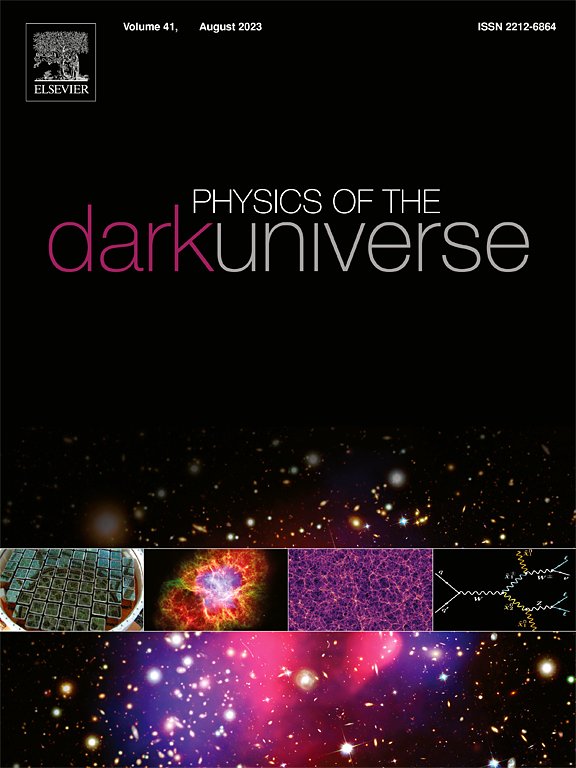P-V 相变的新方法:爱因斯坦引力和全息型暗能量
IF 5
2区 物理与天体物理
Q1 ASTRONOMY & ASTROPHYSICS
引用次数: 0
摘要
在爱因斯坦引力框架内,我们研究了与平坦的弗里德曼-勒梅特-罗伯逊-沃克(FLRW)宇宙相关的热力学方程状态 P=P(V,T)。在这种情况下,我们认为暗部门的各组成部分是非相互作用的流体,在晚期主导着宇宙的能量含量。在这种情况下,宇宙学巧合参数的函数结构在允许一阶 P-V 相变方面起着重要作用;具体地说,暗能量密度和巧合参数必须以视界半径的形式给出。本文章由计算机程序翻译,如有差异,请以英文原文为准。
A new approach to P−V phase transitions: Einstein gravity and holographic type dark energy
In the framework of Einstein’s gravity, we study the thermodynamic equation state, , associated with a flat Friedmann–Lemaitre–Robertson–Walker (FLRW) universe. In this scenario, we consider the components of the dark sector as non-interacting fluids that dominate the universe’s energy content at late times. Under these circumstances, the functional structure of the cosmological coincidence parameter plays a relevant role in admitting first-order phase transitions; specifically, the dark energy density and the coincidence parameter must be given in terms of the radius of the apparent horizon.
求助全文
通过发布文献求助,成功后即可免费获取论文全文。
去求助
来源期刊

Physics of the Dark Universe
ASTRONOMY & ASTROPHYSICS-
CiteScore
9.60
自引率
7.30%
发文量
118
审稿时长
61 days
期刊介绍:
Physics of the Dark Universe is an innovative online-only journal that offers rapid publication of peer-reviewed, original research articles considered of high scientific impact.
The journal is focused on the understanding of Dark Matter, Dark Energy, Early Universe, gravitational waves and neutrinos, covering all theoretical, experimental and phenomenological aspects.
 求助内容:
求助内容: 应助结果提醒方式:
应助结果提醒方式:


